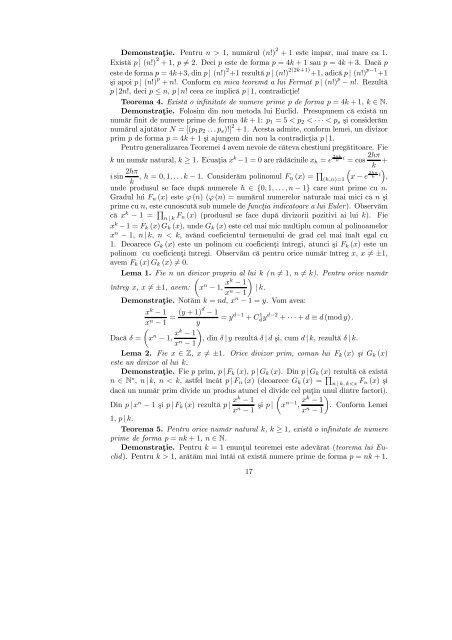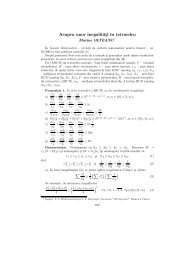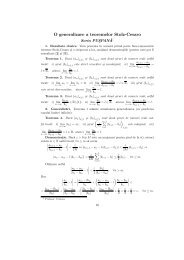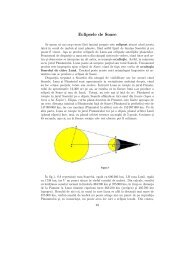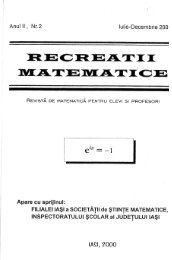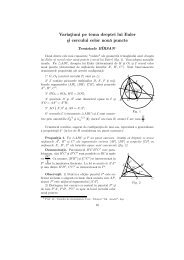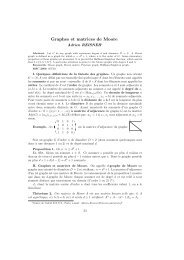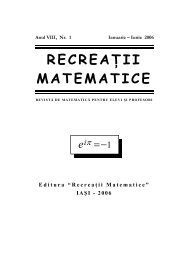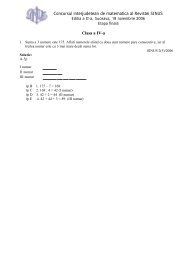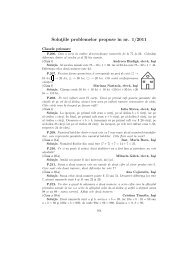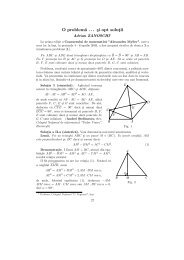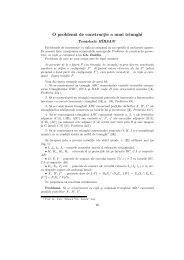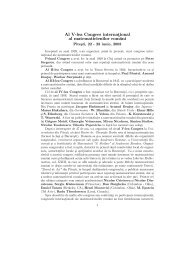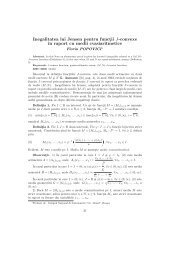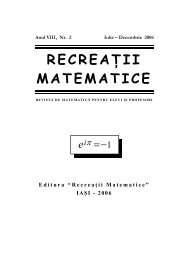You also want an ePaper? Increase the reach of your titles
YUMPU automatically turns print PDFs into web optimized ePapers that Google loves.
Demonstraţie. Pentru n>1, numărul (n!) 2 +1 este impar, mai mare ca 1.<br />
Există p | (n!) 2 +1, p 6= 2.Decip este de forma p =4k +1sau p =4k +3.Dacă p<br />
este de forma p =4k+3, dinp | (n!) 2 +1 rezultă p | (n!) 2(2k+1) +1, adică p | (n!) p−1 +1<br />
şi apoi p | (n!) p + n!. Conformcumica teoremă aluiFermatp | (n!) p − n!. Rezultă<br />
p | 2n!, deci p ≤ n, p | n! ceea ce implică p | 1, contradicţie!<br />
Teorema 4. Există o infinitate de numere prime p de forma p =4k +1, k ∈ N.<br />
Demonstraţie. Folosim din nou metoda lui Euclid. Presupunem că existăun<br />
număr finit de numere prime de forma 4k +1: p 1 =5


